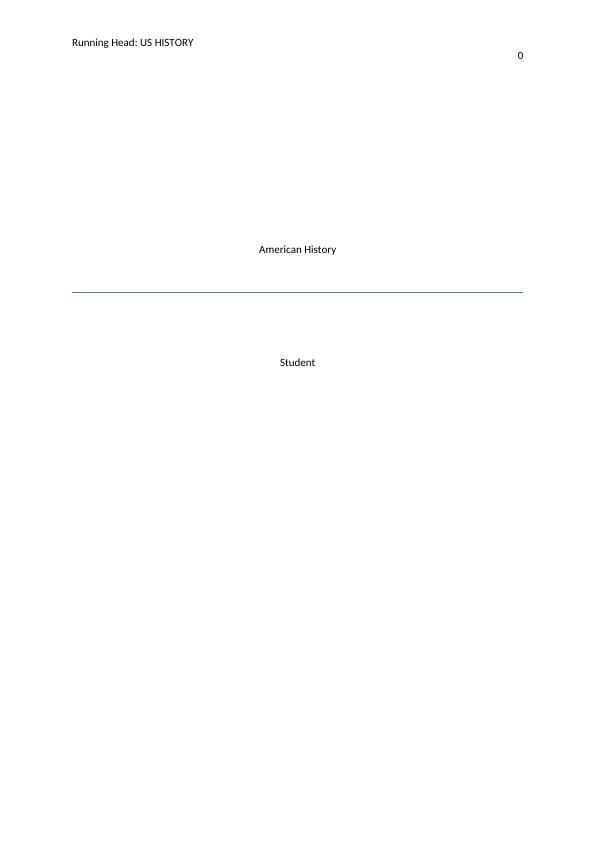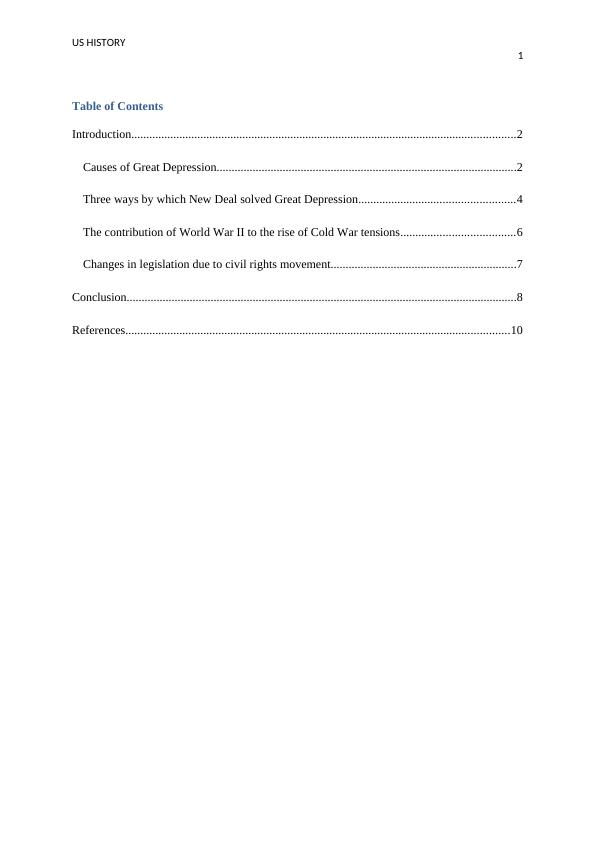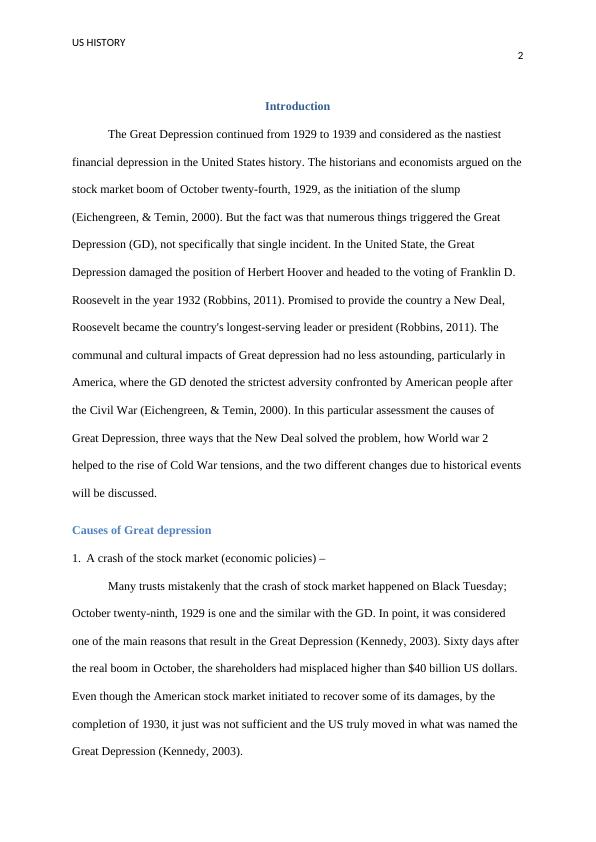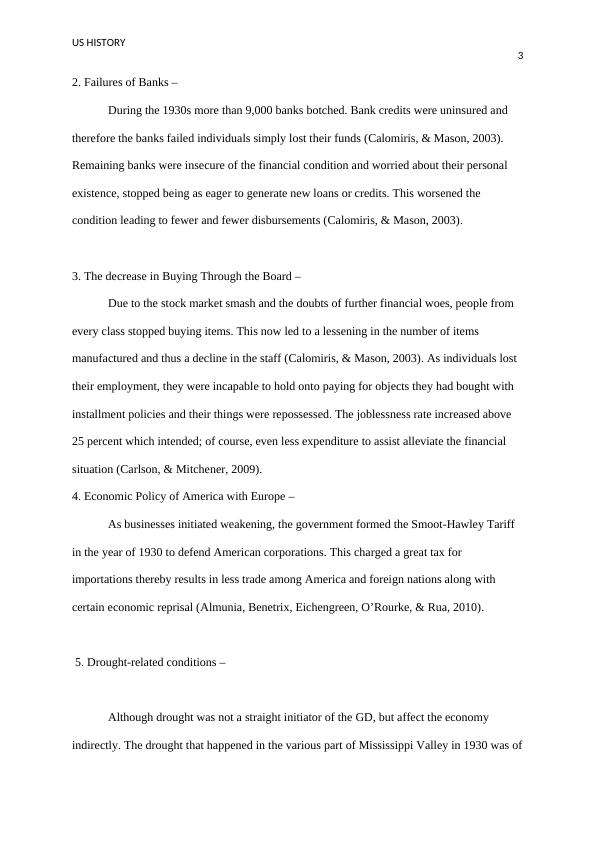Causes of Great Depression, New Deal, Cold War Tensions, Civil Rights Movement
The assignment is about explaining the significant international and domestic challenges that the United States faced since World War I in the course 'The Making of Modern America'.
12 Pages2883 Words252 Views
Added on 2023-05-29
About This Document
This article discusses the causes of Great Depression, three ways that the New Deal solved the problem, how World War 2 helped to the rise of Cold War tensions, and the changes in legislation due to the civil rights movement.
Causes of Great Depression, New Deal, Cold War Tensions, Civil Rights Movement
The assignment is about explaining the significant international and domestic challenges that the United States faced since World War I in the course 'The Making of Modern America'.
Added on 2023-05-29
ShareRelated Documents
End of preview
Want to access all the pages? Upload your documents or become a member.
International Finance And Economy Report
|4
|363
|20
Causes of Great Depression in USA
|9
|1952
|252




